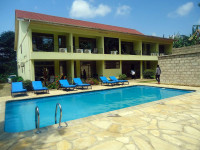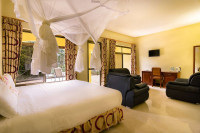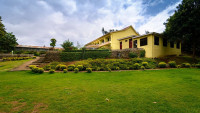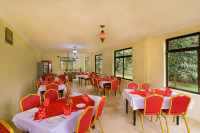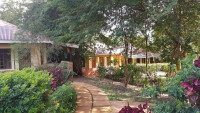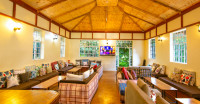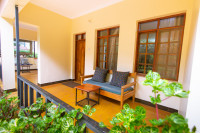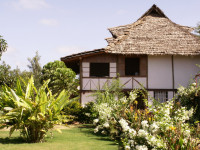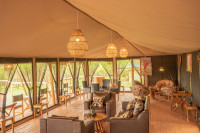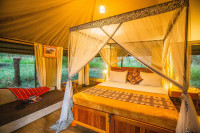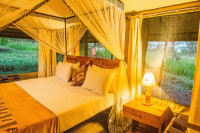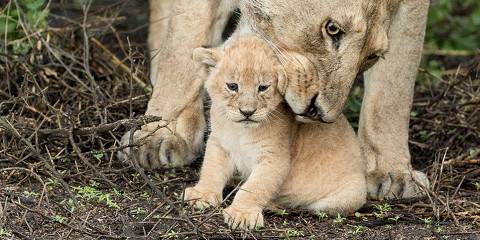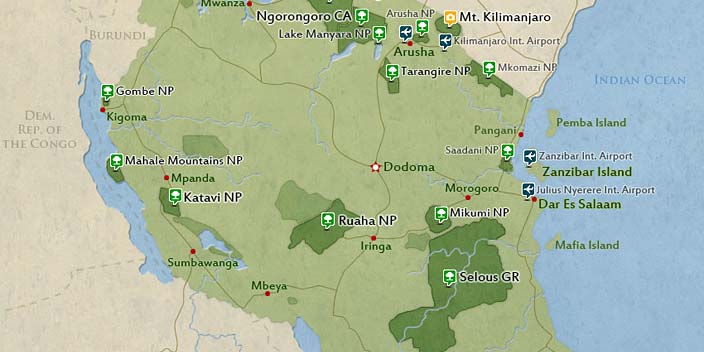
Arrival
Arrival

Day 1
Arrival in Arusha
Arrival in Arusha
Upon your arrival at Kilimanjaro (JRO) or Arusha (ARK) airport, your private driver guide will meet you and transfer you to your accommodation in Arusha where you will enjoy dinner and relax overnight in preparation for the safari departure the next day.
- Main Destination:
- Arusha (City)
- Accommodation:
- Mvuli Hotel
- Meals & Drinks:

Day 2
Arusha to Tarangire National Park
Arusha to Tarangire National Park
After breakfast at your accommodation, your guide will pick you up and take you to Tarangire National Park, named after the Tarangire River that flows through it. Known as the ‘river of warthogs,’ it serves as the only water source for wildlife during the dry season. The park features diverse landscapes, from dense vegetation to elephant grass, acacia woodlands, and lush groundwater forests. Tarangire is famous for its large elephant herds, often seen gathering by the river, and is also home to giraffes, bushbucks, and hartebeests. These animals are frequently followed by predators such as lions and leopards. The park boasts the highest number of breeding bird species found anywhere in the world! After an exciting game drive, you’ll head to your accommodation in the Karatu district for dinner and an overnight stay.
- Main Destination:
- Tarangire National Park
- Accommodation:
- Eileen's Trees Inn
- Meals & Drinks:

Day 3
Ngorongoro Crater to Serengeti National Park
Ngorongoro Crater to Serengeti National Park
After breakfast in the morning, you'll depart for Ngorongoro Crater. This stunning natural wonder, surrounded by steep volcanic walls, is a pristine wilderness of sweeping savannahs, acacia woodlands, and shimmering lakes and swamps. Formed millions of years ago when a massive volcano exploded and collapsed, the Crater is renowned for both its geological beauty and its incredible wildlife. It’s home to some of the densest populations of large mammals in Africa. The drive into the Crater is an adventure in itself, and once you reach the floor, you'll find yourself surrounded by vast herds of wildebeests, zebras, gazelles, and over 500 bird species. The Crater offers one of the best opportunities to see the endangered black rhinos, often spotted grazing on the open grasslands. After a delicious lunch and an extensive game drive, you'll continue your journey to Serengeti National Park.
- Main Destination:
- Ngorongoro Crater
- Accommodation:
- Tukaone Hembe Camp
- Meals & Drinks:

Day 4
Serengeti National Park to Karatu
Serengeti National Park to Karatu
After breakfast, you'll embark on a game drive through the Serengeti, one of the world’s most spectacular wildlife destinations. Known for its vast open grasslands, the Serengeti offers outstanding wildlife viewing opportunities. As Tanzania's oldest national park, it is also one of the most ancient ecosystems on Earth, with its climate and vegetation largely unchanged for millions of years. While the Serengeti is renowned for its rich wildlife, it is especially famous for the annual Great Migration, where huge herds of wildebeest, along with zebras and antelopes, follow a seasonal pattern in search of fresh grazing. The timing of this remarkable migration depends entirely on the yearly rainfall. After lunch and an exciting game drive, you’ll head to our partner lodges in Karatu for dinner and an overnight stay.
- Main Destination:
- Serengeti National Park
- Accommodation:
- Eileen's Trees Inn
- Meals & Drinks:

Day 5
Lake Manyara National Park to Arusha
Lake Manyara National Park to Arusha
After breakfast at your accommodation, you'll depart for Lake Manyara National Park, a pristine paradise renowned for its abundance of birdlife and famous tree-climbing lions. The park is bordered by the dramatic western escarpment of the Rift Valley, with the shallow, alkaline Lake Manyara to the east. The lake spans a large portion of the park, fluctuating with the seasons and attracting thousands of flamingos during the rainy season. The name "Manyara" comes from the Maasai word ‘emanyara,’ a plant used to build protective enclosures (bomas) around homesteads. The park boasts a rich variety of vegetation, ranging from savannah to evergreen forest. During your exploration, you might encounter giraffes, zebras, wildebeests, buffalos, and elephants—and if you're lucky, you may even spot lions lounging in the trees. After lunch and an exciting game drive, you’ll head back to Arusha.
- Main Destination:
- Lake Manyara National Park
- Accommodation:
- No accommodation (End of tour)
- Meals & Drinks:


